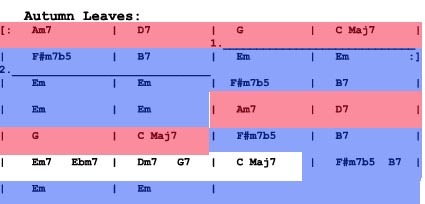« A clean mandolin is a happy mandolin |
Main
| Let's review. Why Closed Fingerings again? »
 June 4, 2009 | Start your day out with a song June 4, 2009 | Start your day out with a song
We all have different motivations for playing. A couple weeks ago we explored Malcolm Gladwell's 10,000 hours principle of mastery from his recent bestseller "Outliers." Not everyone is cut out to me a mandolin immortal, let alone, few of us have the time to even try. Nonetheless, we have to maximize what learning time we do have, and try to find the balance between learning acceleration and enjoyment. We want to talk about a quick way of doing both, "starting out with a song!"
We've always advocated including 8-15 minutes of warm-up time in your daily practice regimen. The purpose here is to get the muscles and circulation going, as well as mental synapses for effective playing and efficient learning. Most often, you'd start your session with the exercises, but how about a twist to this? Start with a familiar tune. Let's suggest "Autumn Leaves."
You'd play through the melody of the song once or twice (try it in 3rd position!), maybe run through the chords a few times. If you're up to it, improvise a few choruses. Then, get your brain going and isolate the tonal centers. The big ones in this song will be E minor and G Major:

Note in the above diagram, we've tinted what we feel to be G Major in red, E minor in blue. (Don't worry about the rest of the song, that's for another discussion). Next on your activities, go to some FFcP exercises in the key of G. Play them through in the 1st position (4th FFcP on D string 5th fret). Get the feeling of where everything is, especially the 'I vi7 ii7 V7' arpeggios; note the chord similarities within the song. There's a reason for those measures!
Move up the fingerboard with a 2nd FFcP basing your 2nd finger on the D string 5th fret. Same thinking as you play the exercise, how will you use these patterns in your improvising of the song? Experiment with other higher position variations; move between them if you can.
You can than tackle the E minor the same way, starting with the Dorian/Minor FFcP, 1st FFcP D string 2nd fret. Again, check out the 'Em G F#m7-5 B7' progression within the exercise and try to wire your brain for where these lie. Move them up the fingerboard, too.
After you've worked these, go back and do some more improvising on "Autumn Leaves". You should notice more ideas coming to you, sort of in an "auto-pilot" sense. This is great because it allows your brain the higher function processes of thinking big picture structure of your solos, where you will peak in intensity, where you'll take mental "breaths," how you're going to end. This can get you away from just sitting in front of some chords and "blowing."
Purpose. Meaning. Improvisation with intent.
Occasionally, let it start with a song.
Further:
Are you improving?
Practice Regime; A Balanced Diet
Why Play?
Super FFcP
Advanced FFcP: Over the Fingerboard
Posted by Ted at June 4, 2009 12:15 PM

Disclaimer: In the 'Information Age' of the 21st Century,
any fool with a computer, a modem, and an idea can
become a self-professed 'expert." This site does not
come equipped with 'discernment.'
|



